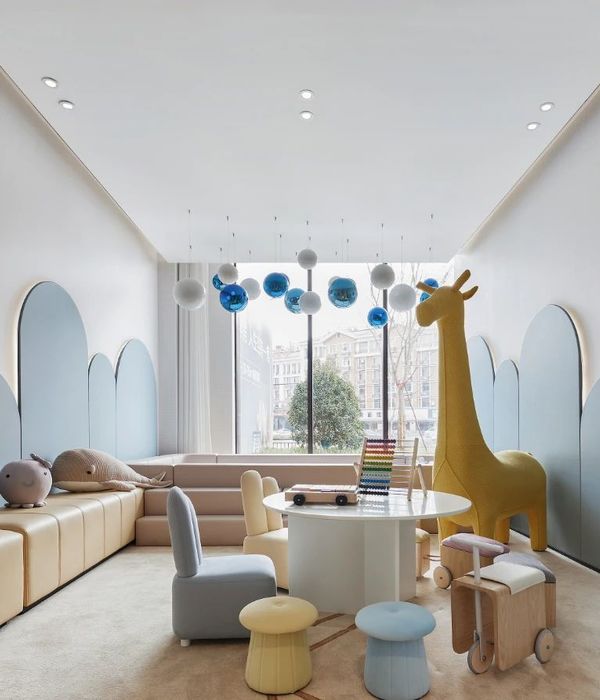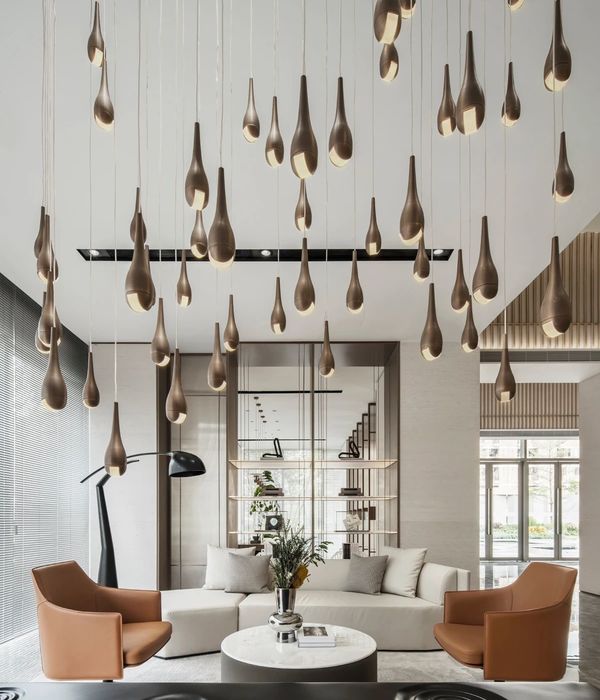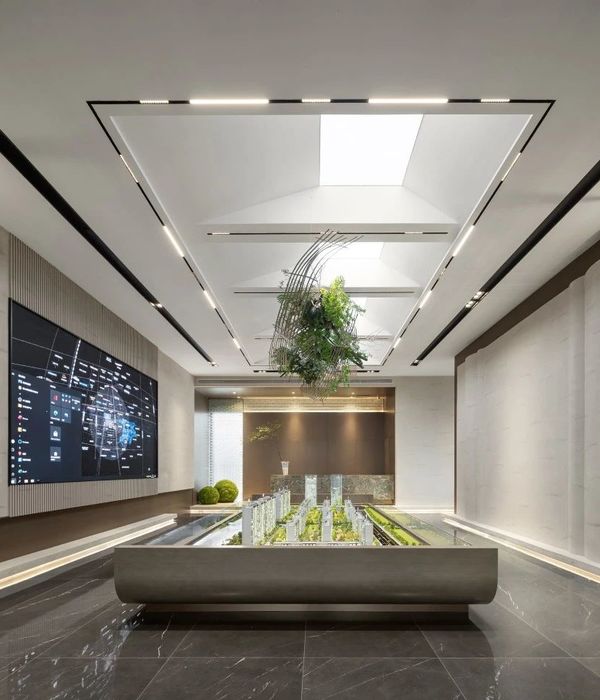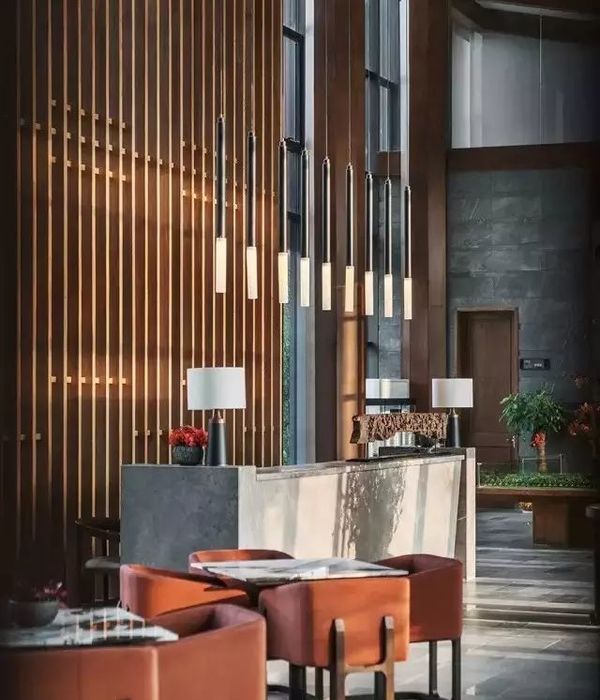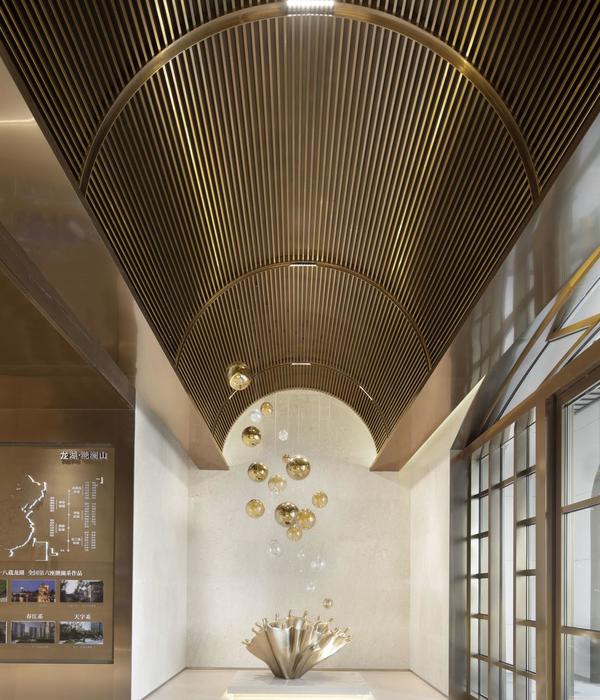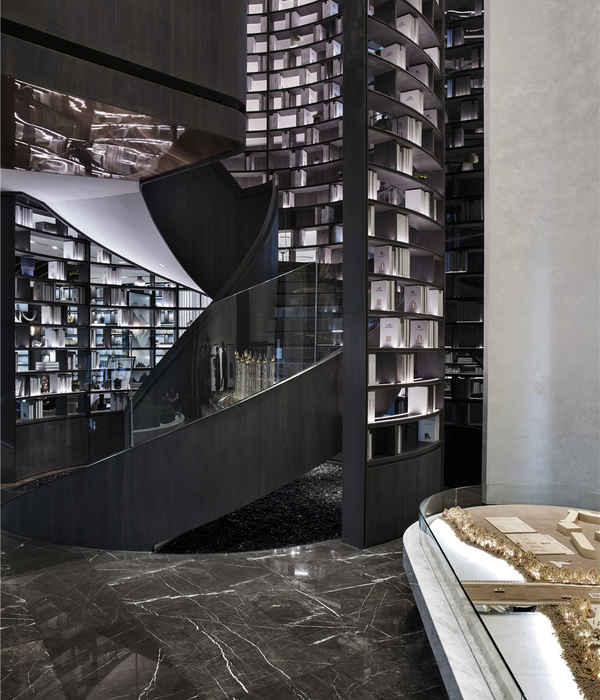Context. In 2018, the company Perini Business Park promoted a national and open project competition, aiming to build a new technology park in its condominium, the largest multi-sector business park in Latin America, located in the Industrial District of Joinville, in Santa Catarina.
The proposals should present a master plan for the occupation of an area of approximately 70,000m2 surrounded by an area of preserved forest, and, inserted in it, the project for the main building.
Also in 2018, the implementation of the master plan began with the construction of the first building and headquarters, the Ágora HUB. The Ágora MOB building project continues the implementation of the master plan with 7,500m² dedicated to the leasing of offices of companies in the industrial and technological fields.
Master plan. The master plan thinks of the Ágora Tech Park as an attraction pole for the meeting between society, private initiative, academia, and government, contributing to regional development through socioeconomic benefits for Joinville and Santa Catarina. The project will offer high-quality environments for research, development, work, and leisure activities, offering attractions for high-tech companies. For this, the proposal appropriates concepts of a smart city, addressing issues related to the environment, infrastructure, mobility, quality of life, eco-efficiency and the integration of differentiated solutions.
The implantation harmonizes with the Perini Business Park Condominium through the straight lines of the buildings, the few changes in the road network, the traffic of people and vehicles. New crosswalks will be created to facilitate pedestrian and cyclist access to the new park. The proposal is organized around the existing forest. Only a few changes will be made to make the vegetation more pleasant to interact with. The preservation of vegetation will emphasize the technological park's commitment to its eco-efficiency.
The first building, the Ágora HUB, occupies the corner of the complex as it is a visually privileged and strategic location for the rest of the park's construction.
Agora Mob. The implantation of the second building, Ágora HUB, articulates two levels: the main access is via Av. Perini, which cuts the slope with concrete retaining walls and allows access to the forest that will be implanted between the buildings and the preserved forest. On this level, the triple-height atrium organizes the arrival, vertical circulations, and the multipurpose room; in the second level, the upper level follows the north axis, connecting to the level of the headquarters building. The tour articulates, on one side, the view of the preserved forest and, on the other, shops and snack bars. The building is closed by the glass and perforated tile skin on the east and west sides, with strategic grooves in the facade that demarcate accesses, common areas, and special rooms. On the north face, the perforated tile is mounted as a horizontal brise. On the south face, the glass skin has varied modulation, creating dynamics on the façade.
Amphitheater. At the bifurcation point of the masterplan's ordering axes, making the transition between the height of the awning and the forest, a large external staircase accommodated on the slope is proposed. By adopting double steps, it also assumes the role of the grandstand, creating an amphitheater between Building 1 (HUB) and Building 2 (MOB). At your point of arrival, there is an access square to the forest. The square, with the support of the stands, will host outdoor events, such as lectures and concerts. In everyday situations, it can be used as a place to rest and decompress with contemplation of the woods and woods.
Void and visual focus. Internally, the building is organized in a pragmatic way, with a central corridor and offices that occupy the perimeter of the building. The modulation is designed to adapt to different room sizes, ranging from 50m2 to 120m2. Extreme pragmatism is broken in the circulations, where voids are placed, designed to improve the building's environmental comfort and to promote possible visual relationships. The atrium is the building's large meeting area. This is where the visual relationships of workers and visitors intensify, as well as the relationships between inside and outside strengthen.
Environmental comfort. The micro-perforated metallic skin that surrounds the east and west façades attenuates sunlight, reducing the building's internal heating, while allowing controlled passage of light and visuals from the inside out. In the access corridors of the offices, the need for stairways was used, solving the escape route in emergency situations to create spaces aligned between the floors. On the fourth and last floor, the roof is designed to allow the entry of natural light and the exhaust of hot air that rises to the top floor, configuring the chimney effect. On the north façade, horizontal louvers at different angles protect the façade from direct sunlight. As they are made of the same material as the skin, micro perforated tile allows the passage of filtered lighting, and establish the unity of the set.
Constructive system. As in the first building in the complex, the adoption of a structural system in precast parts (foundations and hyperstatic pillars) combined with in loco molded elements (arrests and ribbed slab), combined with the use of industrialized constructive components in most of the building, allowed a quick and dry work.
▼项目更多图片
{{item.text_origin}}


